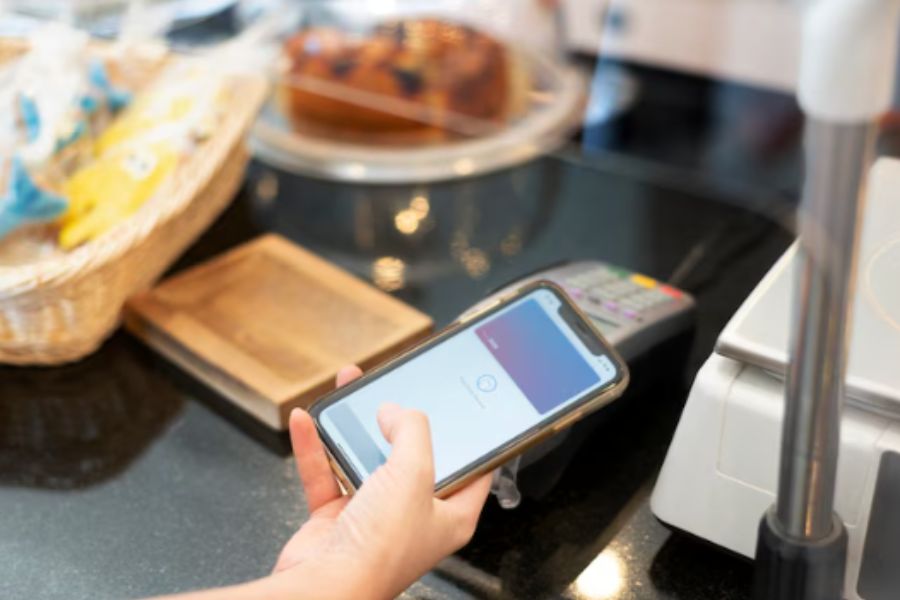Zara, renowned for its fashion-forward approach and tech-savvy initiatives, has recently reached record revenue levels, thanks to its adoption of a next-gen Point of Sale (POS) system. This move reflects Zara’s ongoing commitment to innovation in retail, setting new standards for efficiency and customer satisfaction. Let’s explore this case study next generation POS system.
Background On Zara’s Business Model
Zara’s business model is often hailed as revolutionary in the fashion industry due to its unique approach to supply chain management, product design, and retail strategy. Unlike traditional fashion retailers that typically release seasonal collections months in advance, Zara operates on a fast fashion model characterized by rapid inventory turnover and quick response to market trends.
Central to Zara’s business model is its vertically integrated supply chain, which enables the company to have tight control over every stage of the production process. Zara owns much of its manufacturing facilities and operates a network of highly automated distribution centers, allowing for efficient production and distribution of its products.
One key characteristic of Zara’s business model is its “fast fashion” strategy, which involves the rapid design, production, and delivery of new styles to stores. This agility allows Zara to stay ahead of the competition and respond swiftly to changing consumer preferences.
Challenges With the Current POS System Of Zara
While Zara has been a pioneer in the fashion retail industry, its current Point of Sale (POS) system may face certain challenges that need attention.
Some of the notable challenges include:
- Outdated Technology: Zara may encounter issues with an outdated POS system that may lack the latest features and functionalities. This could hinder the ability to adapt to changing customer expectations and industry trends, potentially affecting operational efficiency.
- Scalability Constraints: If the POS system is not designed to scale with the business’s growing needs, Zara may face limitations in handling increased transaction volumes, especially during peak seasons or times of high customer traffic.
- Integration Issues: In a rapidly evolving technological landscape, the existing POS system may struggle with seamless integration with other business applications, such as inventory management, customer relationship management (CRM POS), or e-commerce platforms. This can result in data silos and inefficiencies in overall business processes.
- Security Concerns: Outdated POS systems may pose security risks, making Zara susceptible to potential data breaches or unauthorized access. With cyber threats becoming increasingly sophisticated, maintaining robust security features is crucial to safeguarding customer information and maintaining the trust of the clientele.
- Lack Of Mobility And Flexibility: In retail, adaptable and mobile POS systems are crucial for meeting customer demands, particularly in scenarios like pop-up stores or mobile checkout. Without these capabilities, Zara’s current POS system might impede its ability to align with changing consumer preferences.
- User Interface And Experience: An outdated or cumbersome user interface may lead to inefficiencies in the checkout process, affecting the overall customer experience. A modern, user-friendly POS system can enhance the speed of transactions and contribute to higher customer satisfaction.
- Limited Analytical Capabilities: The current POS system might lack advanced analytics and reporting features, limiting Zara’s ability to gather insights into customer behavior, inventory trends, and overall business performance. This information is essential for formulating well-informed strategic choices.
- Dependency On Legacy Systems: If Zara relies on legacy systems that are no longer supported or maintained by vendors, it becomes challenging to address issues promptly and keep the POS system up to date with the latest technologies.
Addressing these challenges requires a thoughtful approach to upgrading or replacing the current POS system, taking into account Zara’s unique business requirements, technological advancements, and the evolving landscape of the retail industry.
Evaluation Of Next-Gen POS System
- Enhanced Customer Experience
Next-gen POS systems offer intuitive interfaces and faster processing times, reducing wait times at checkout and enhancing overall customer satisfaction. With features like mobile payments and self-checkout options, customers enjoy greater convenience and flexibility during their shopping journey.
- Integrated Omnichannel Capabilities
Modern consumers expect a seamless shopping experience across all channels, whether online, in-store, or via mobile. Next-gen POS systems seamlessly integrate with e-commerce platforms and inventory management systems, enabling retailers to provide a cohesive omnichannel experience.
- Advanced Analytics for Informed Decision-Making
According to The Motley Fool, 51% of valuable retail data comes from POS transactions, including metrics like average transaction value and sales per category. This data is essential for understanding customer behavior and optimizing strategies. Next-gen POS systems provide real-time insights into sales, inventory, and customer preferences.
- Seamless Integration with Third-Party Applications
Flexibility is key in today’s retail environment, and next-gen POS systems offer seamless integration with a wide range of third-party applications. From customer relationship management (CRM) tools to loyalty programs and accounting software, these systems enable retailers to customize their POS environment to suit their unique needs and preferences.
- Security and Compliance
With the rise of cyber threats and stringent regulatory requirements, security is paramount for retailers handling sensitive customer data. Next-gen POS systems incorporate robust security features such as encryption, tokenization, and EMV compliance to safeguard transactions and protect customer information.
Implementation Process At Zara Did
At Zara, the implementation process for the POS system transition involved several key phases to ensure seamless integration and staff adaptation. This comprehensive case study next generation POS system explores the successful deployment of Zara’s next-generation POS system, shedding light on the strategic approach taken and the positive outcomes achieved.
Planning And Strategizing For The POS System Transition
The initial stage focused on meticulous planning and strategizing. Zara’s leadership team collaborated to outline the objectives, scope, and goals of the POS system transition. This involved assessing the business’s specific needs, considering future scalability, and devising a comprehensive strategy to enhance the overall retail experience.
Integration Of New Hardware And Software
Following the planning phase, Zara proceeded with the integration of new hardware and software components. This step required careful coordination between the IT department, vendors, and other relevant stakeholders.
The selection and deployment of state-of-the-art POS hardware and software aimed to streamline transactions, improve efficiency, and provide a foundation for future technological advancements within the retail environment.
Staff Training And Adaptation To The Next Gen POS System
Proper training and adaptation are crucial for ensuring that staff members can effectively utilize the new POS system. Training sessions should cover how to operate the hardware and software, process transactions, handle customer inquiries, and leverage any new features. Additionally, providing ongoing support and guidance during the transition period can help employees feel more confident and comfortable with the new system.
The Impact Of The Next Gen POS System
Achieving New Revenue Records
A next-gen POS system immediately boosts sales and revenue by improving checkout efficiency, reducing wait times, and enhancing the overall customer experience. With advanced analytics, businesses gain insights into customer preferences, enabling targeted marketing strategies and product offerings, ultimately driving higher sales and revenue.
Short-Term And Long-Term Impacts
Short-term benefits of a next-gen POS system include improved operational efficiency and cost savings. Automation reduces errors and streamlines inventory management, allowing businesses to reallocate resources. Enhanced data analytics offer insights into sales trends and customer preferences, driving immediate improvements in sales and profitability.
Over the long term, the benefits of a next-gen POS system extend beyond immediate revenue gains to include sustainable business growth and competitive advantage. By leveraging technology to optimize operations, enhance customer experiences, and gain deeper insights into market trends, businesses can build a stronger foundation for long-term success.
Lessons Learned And Best Practices From Case Study Next Generation POS System
In today’s dynamic retail environment, staying ahead of the competition requires embracing the latest technology, especially in the form of next-generation Point of Sale (POS) systems. Real-world case study next generation POS systems like Zara offer valuable insights and best practices for successful implementation:
- Prioritize Customer Needs
Understanding customer preferences is key. By focusing on user experience and functionality, businesses ensure that their new POS systems align seamlessly with customer expectations, fostering satisfaction and loyalty.
- Invest in Training
Comprehensive training programs are essential for maximizing the potential of next-gen POS systems. By providing thorough instruction on system functionalities and customer service techniques, businesses empower their staff to utilize the system effectively and deliver exceptional service.
- Seamless Integration
Integrating the new POS system with existing systems, such as inventory management and CRM software, is crucial for optimizing efficiency. Seamless interoperability and data synchronization across all platforms streamline operations and improve decision-making processes.
- Harness Data Insights
Leveraging advanced analytics capabilities provides invaluable insights into customer behavior, sales trends, and inventory management. By using this data to inform strategic decisions and tailor marketing strategies, businesses can drive growth and improve operational efficiency.
- Ensure Scalability and Flexibility
Next-gen POS systems should be scalable and adaptable to accommodate future growth. Investing in systems that offer flexibility in customization and integration with emerging technologies ensures agility in response to market dynamics.
- Prioritize Security
Security and compliance are paramount when implementing next-gen POS systems. Robust security measures, such as encryption and compliance with industry standards, safeguard customer data and maintain trust and credibility in the marketplace.
Why Is ConnectPOS The Best For Seeking Next Gen POS System
ConnectPOS stands out as the ideal choice for businesses seeking a next-gen POS system due to several key factors:
- Advanced Features
ConnectPOS offers a comprehensive suite of tools tailored for modern retailers, including intuitive user interfaces, real-time inventory management, and integrated analytics, enhancing operational efficiency and improving the customer experience.
- Omnichannel Capabilities
Businesses utilizing ConnectPOS can seamlessly integrate their online and offline sales channels, providing customers with a unified omnichannel experience. Whether shopping in-store, online, or via mobile, customers benefit from consistent service and access to real-time inventory information, driving sales and fostering loyalty.
- Customization and Scalability
ConnectPOS provides flexibility and scalability to accommodate businesses of all sizes. With customizable features and configurations, businesses can tailor the POS system to their specific requirements. Additionally, the platform’s scalability ensures it can adapt to changing demands and expand alongside the business.
- Ease of Integration
ConnectPOS seamlessly integrates with a wide range of third-party applications and platforms, such as e-commerce platforms, accounting software, and CRM systems. This seamless integration facilitates smooth data synchronization and interoperability, enabling businesses to optimize operations and leverage existing technology investments.
- Reliability and Security
ConnectPOS prioritizes reliability and security, employing robust encryption and adhering to industry standards to safeguard customer data and transactions. With reliable uptime and round-the-clock support, businesses can trust ConnectPOS to maintain smooth and secure operations at all times.
ConnectPOS not only provides advanced features but also excels in omnichannel capabilities, customization, ease of integration, and reliability with a strong focus on security. These qualities make ConnectPOS a top choice for businesses seeking a next-gen POS system to enhance their operations and elevate the overall customer experience.
FAQs About Case Study Next Generation POS System
- Why Did Zara Upgrade Its POS System?
Zara upgraded its POS system to enhance operational efficiency, improve customer experience, and leverage advanced analytics capabilities. The old system was unable to meet the demands of a fast-paced retail environment, prompting the need for an upgrade.
- What Challenges Did Zara Face With Its Old POS System?
Zara faced challenges with slow checkout processes, inventory inaccuracies, and limited analytical capabilities with its old POS system. These issues hindered the company’s ability to meet customer demands and make data-driven decisions.
- How Did Zara Choose Between Linux And Windows For The New POS System?
Zara evaluated factors such as system compatibility, security, ease of use, and support options before choosing between Linux and Windows for the new POS system. Ultimately, the decision was based on the system’s ability to seamlessly integrate with existing infrastructure and meet the company’s specific requirements.
- In What Ways Did The Next-Gen POS System Contribute To Zara’s Revenue Growth?
The next-gen POS system contributed to Zara’s revenue growth by streamlining checkout processes, reducing wait times, and improving overall customer experience. Additionally, advanced analytics capabilities provided valuable insights into customer behavior and preferences, enabling targeted marketing strategies and product offerings that resonated with customers, ultimately driving higher sales and revenue.
- What Lessons Can Other Businesses Learn From Zara’s POS System Upgrade?
Other businesses can learn several lessons from Zara’s POS system upgrade, including prioritizing customer experience, leveraging advanced analytics for data-driven decision-making, and investing in technology to stay competitive in the retail industry.
Conclusion
The case study next generation POS system of Zara has demonstrated that this strategic investment played a pivotal role in the company’s success. By effectively addressing the challenges associated with the old POS system and embracing advanced technology, Zara has not only enhanced operational efficiency but has also markedly improved the overall customer experience.
Ready to revolutionize your retail experience? Let’s connect and explore how our innovative solutions can propel your business forward!



